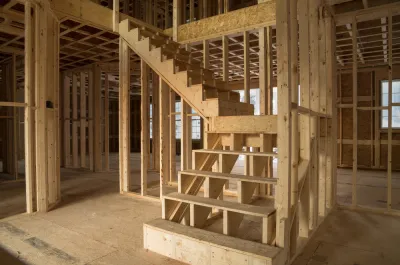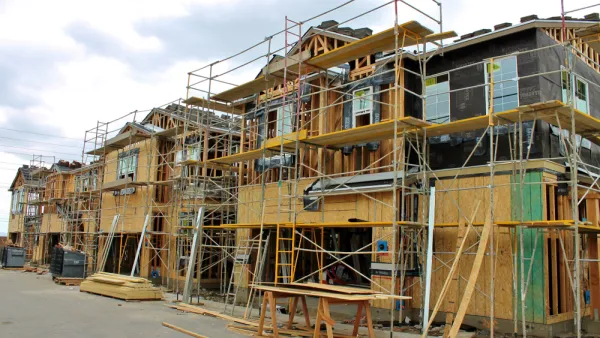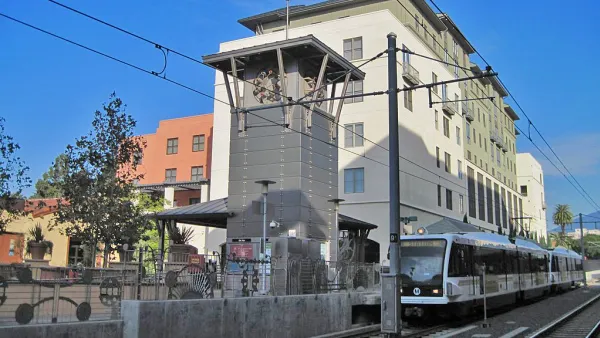It's too early to gauge the long-term effects of California's housing package signed a year ago. But with a $4 billion bond on the ballot this November, some facts (and some dramas) have already made themselves known.

Last September, California Governor Jerry Brown signed into law a raft of bills meant to address the state's housing woes. They included SB 2, SB 3, and the controversial SB 35. Here, Matt Levin checks in on some results of that legislation, acknowledging that the bulk of related construction has yet to occur.
In terms of raw numbers, Levin writes, "After a recent uptick, the state is on pace to greenlight more than 130,000 new housing units this year. That's still 50,000 short of where experts say we need to be to keep prices from getting worse, and way less than what either candidate for governor says we need."
In addition, more localities are reporting their housing data to the state: upwards of 70 percent, according to Ben Metcalf of California's Housing and Community Development Department. "The housing package put some teeth, at last, into those requirements. Cities and counties that fail to provide accurate and timely housing data now face myriad penalties, including the loss of control over local housing approvals."
One of the bills, SB 2, placed a big-dollar bond measure on this year's ballot. "Lawmakers placed a $4 billion bond on the ballot this fall, $3 billion of which will go toward the financing of below-market-rate housing and other forms of housing assistance for low-income Californians (the other $1 billion will go towards home loans for veterans). Californians will have a chance to vote on Prop. 1 in November."
Finally, Levin discusses SB 35 and its usage in Cupertino to push through a large development despite opposition and reticence from local elected officials.
FULL STORY: The state passed a major housing package last year. Is it working so far?

Analysis: Cybertruck Fatality Rate Far Exceeds That of Ford Pinto
The Tesla Cybertruck was recalled seven times last year.

National Parks Layoffs Will Cause Communities to Lose Billions
Thousands of essential park workers were laid off this week, just before the busy spring break season.

Retro-silient?: America’s First “Eco-burb,” The Woodlands Turns 50
A master-planned community north of Houston offers lessons on green infrastructure and resilient design, but falls short of its founder’s lofty affordability and walkability goals.

Test News Post 1
This is a summary

Analysis: Cybertruck Fatality Rate Far Exceeds That of Ford Pinto
The Tesla Cybertruck was recalled seven times last year.

Test News Headline 46
Test for the image on the front page.
Urban Design for Planners 1: Software Tools
This six-course series explores essential urban design concepts using open source software and equips planners with the tools they need to participate fully in the urban design process.
Planning for Universal Design
Learn the tools for implementing Universal Design in planning regulations.
EMC Planning Group, Inc.
Planetizen
Planetizen
Mpact (formerly Rail~Volution)
Great Falls Development Authority, Inc.
HUDs Office of Policy Development and Research
NYU Wagner Graduate School of Public Service




























